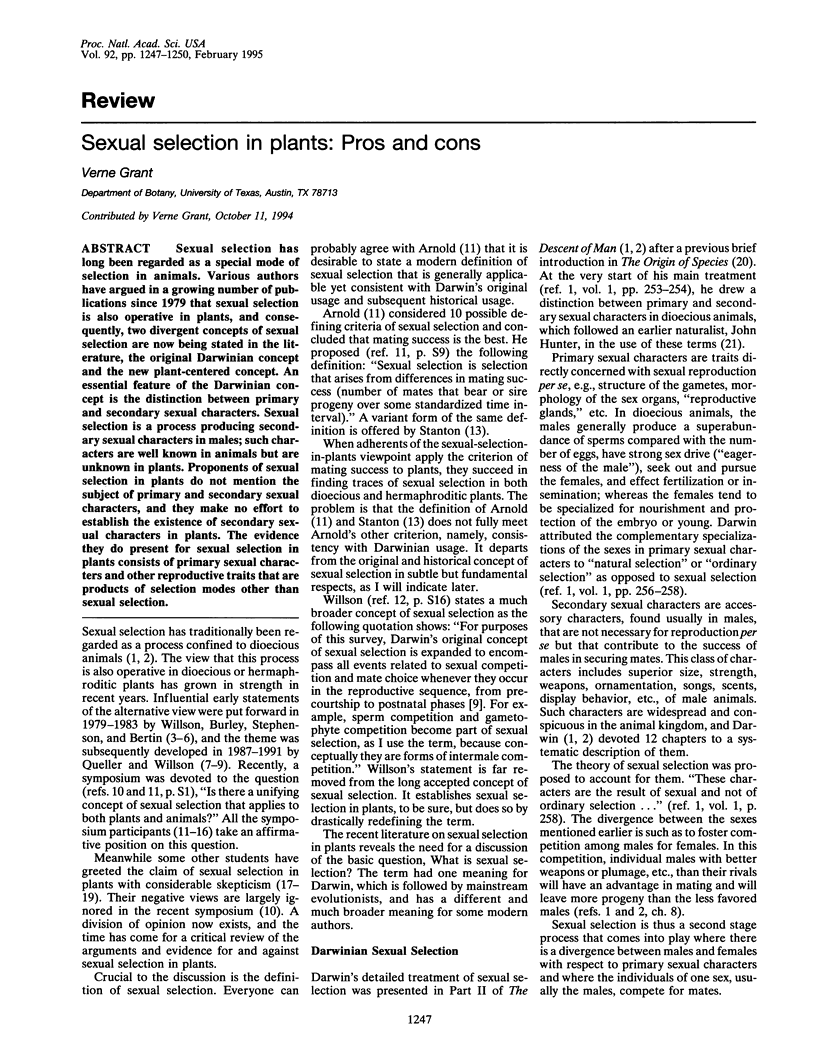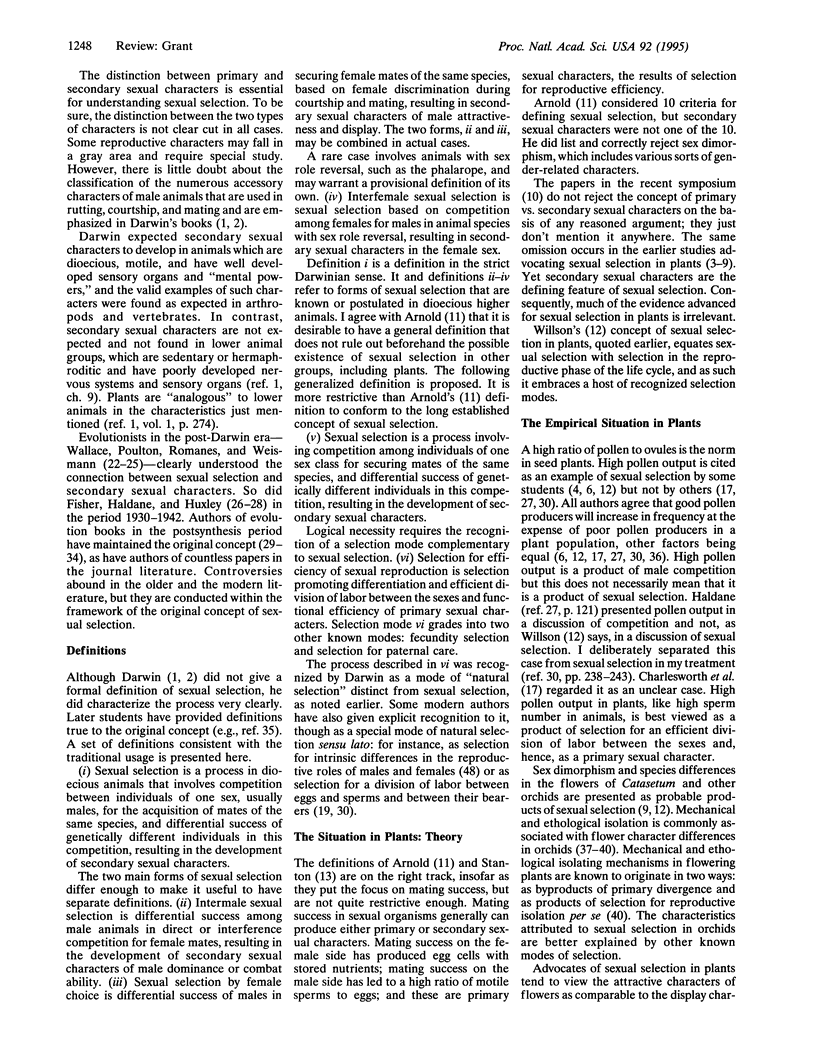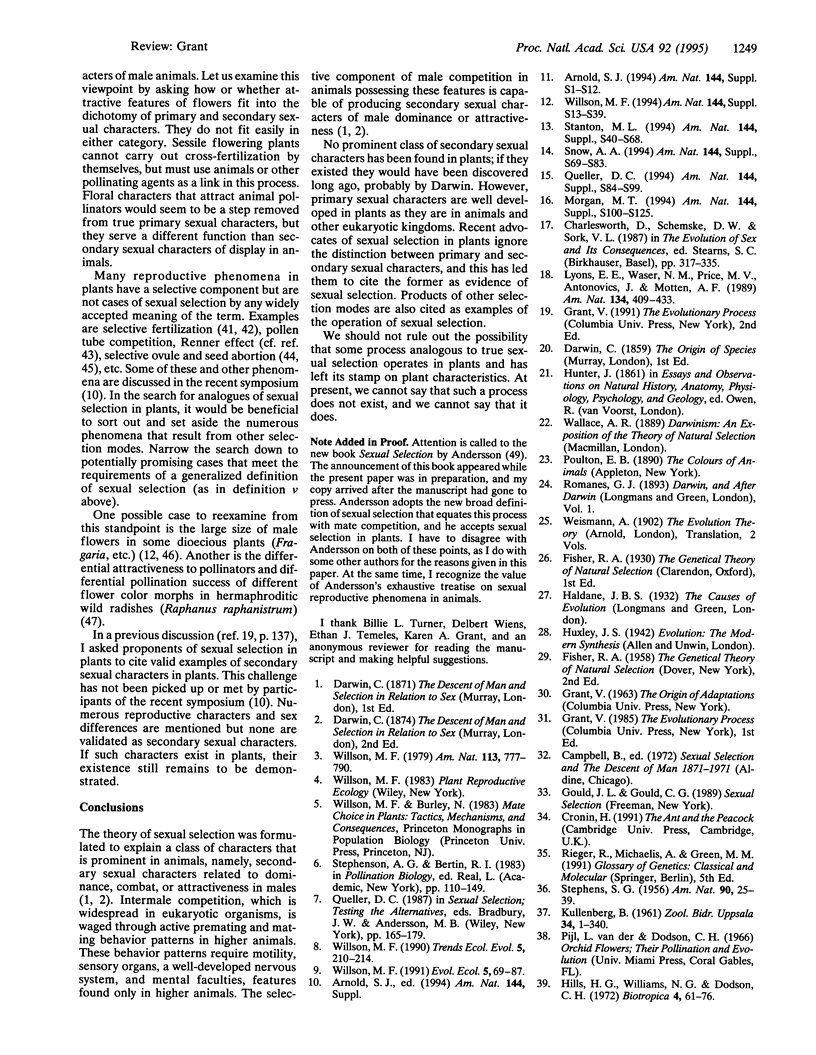Abstract
Sexual selection has long been regarded as a special mode of selection in animals. Various authors have argued in a growing number of publications since 1979 that sexual selection is also operative in plants, and consequently, two divergent concepts of sexual selection are now being stated in the literature, the original Darwinian concept and the new plant-centered concept. An essential feature of the Darwinian concept is the distinction between primary and secondary sexual characters. Sexual selection is a process producing secondary sexual characters in males; such characters are well known in animals but are unknown in plants. Proponents of sexual selection in plants do not mention the subject of primary and secondary sexual characters, and they make no effort to establish the existence of secondary sexual characters in plants. The evidence they do present for sexual selection in plants consists of primary sexual characters and other reproductive traits that are products of selection modes other than sexual selection.
Full text
PDF



Selected References
These references are in PubMed. This may not be the complete list of references from this article.
- Charlesworth D., Schemske D. W., Sork V. L. The evolution of plant reproductive characters; sexual versus natural selection. Experientia Suppl. 1987;55:317–335. doi: 10.1007/978-3-0348-6273-8_14. [DOI] [PubMed] [Google Scholar]
- Grant V. Modes and origins of mechanical and ethological isolation in angiosperms. Proc Natl Acad Sci U S A. 1994 Jan 4;91(1):3–10. doi: 10.1073/pnas.91.1.3. [DOI] [PMC free article] [PubMed] [Google Scholar]


